Discover 20 hidden attractions, cool sights, and unusual things to do in Roanoke (United States). Don't miss out on these must-see attractions: Berglund Center, Taubman Museum of Art, and Roanoke Star. Also, be sure to include O. Winston Link Museum in your itinerary.
Below, you can find the list of the most amazing places you should visit in Roanoke (Virginia).
Table of Contents
Berglund Center

Arena in Roanoke, Virginia. Berglund Center is a 10,500-seat multi-purpose arena located in the Williamson Road neighborhood of Roanoke, Virginia. It was built in 1971. It was the former home to the Roanoke Dazzle basketball team, as well as the Roanoke Express and Roanoke Valley Vipers ice hockey teams. Currently, it is the home of the Roanoke Rail Yard Dawgs of the Southern Professional Hockey League, Virginia Tech, Radford University and Roanoke College men's ice hockey teams. The arena is also the home of the annual boys basketball games between Roanoke's two city high schools, Patrick Henry High School and William Fleming High School.[1]
Address: 710 Williamson Rd NE, 24016-2000 Roanoke (Williamson Road Area)
Taubman Museum of Art
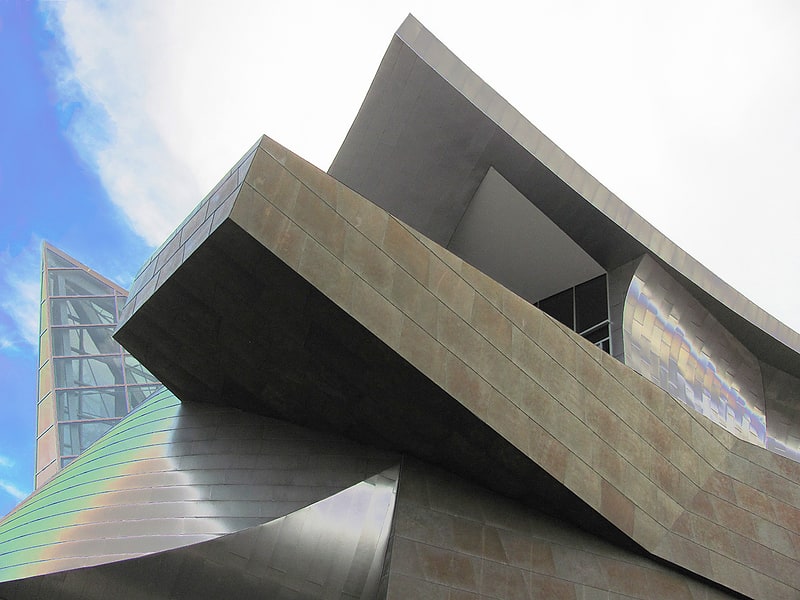
Museum in Roanoke, Virginia. The Taubman Museum of Art, formerly the Art Museum of Western Virginia, is an art museum in downtown Roanoke, Virginia, United States. It was designed by architect Randall Stout.[2]
Address: 110 Salem Ave SE, 24011-1410 Roanoke
Roanoke Star

Park in Roanoke, Virginia. The Roanoke Star, also known as the Mill Mountain Star, is the world's largest freestanding illuminated man-made star, constructed in 1949 at the top of Mill Mountain in Roanoke, Virginia. It is visible for 60 miles from the air and it sits 1,045 feet above the city of Roanoke.[3]
O. Winston Link Museum
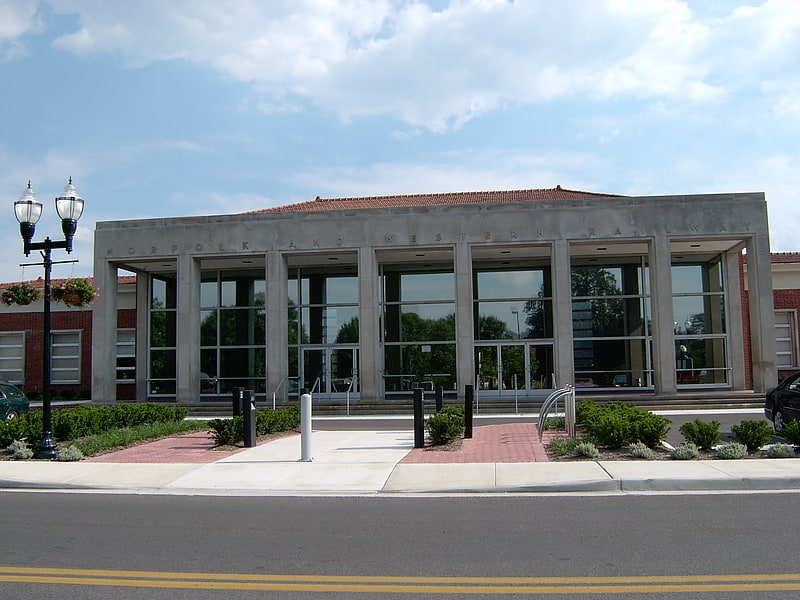
Museum in Roanoke, Virginia. The O. Winston Link Museum is a museum dedicated to the photography of O. Winston Link, the twentieth century railroad photographer widely considered the master of the juxtaposition between steam railroading and rural culture. He is most noted for his 1950's photographs of steam locomotives taken at night, lit by numerous flashbulbs. He carefully planned the lighting and the staging of these photos, placing human subjects in many.
In downtown Roanoke, Virginia, the museum is in a restored Norfolk & Western Railway passenger train station. It opened in January 2004. The building is included in the Norfolk and Western Railway Company Historic District, listed on the National Register of Historic Places in 1999.
It currently displays hundreds of photographic prints and has several interactive displays including audio that provide information on Link's photographic subjects. Also displayed are some of the equipment that Link employed to create his night time photographs.[4]
Address: 101 Shenandoah Ave, 24016 Roanoke
Grandin Theatre

The Grandin Road Commercial Historic District, also referred to as Grandin Village, is a historic district listed on the National Register of Historic Places located in the Raleigh Court neighborhood of the independent city of Roanoke, Virginia, U.S.A. Centered at the intersection of Memorial Avenue and Grandin Road, Grandin Village has become one of the more eclectic areas of Roanoke, with an array of independently owned retail and dining establishments. The district has been noted as one of Roanoke's best examples of a mixed-use urban village, and has been used as a local model for future mixed-use developments within the community.[5]
Address: Grandin Road, 24015 Roanoke
St. Andrew's Roman Catholic Church

Church in Roanoke, Virginia. St. Andrew's Catholic Church is a historic Roman Catholic church and rectory in Roanoke, Virginia, United States. It was built in 1900-1902, and is a buff brick church on a stone foundation in the High Victorian Gothic style. It has a cruciform plan and features two tall Gothic towers which flank the main entrance and are square in plan. On each tower are two small lancet windows, two large pointed-arch stained-glass tracery windows, and sets of double pointed-arch openings at the belfry. Also on the property is a rectory built in 1887. The church replaced an earlier small brick church built in 1883.
The building cost $60,000 to construct, with another $40,000 budgeted for interior appointments and trim. "The buff brick edifice with stone trimming, designed by W. P. Genter of Akron, Ohio, would become a Roanoke landmark."
It was listed on the National Register of Historic Places in 1973.
The church has had two major renovations since its completion. The first renovations took place after the Second Vatican Council authorized certain liturgical alterations. A freestanding altar was installed so that Mass could be celebrated versus populum, the priest facing the people. The ornate high altar was left in place and intact.
Later, the original freestanding altar was replaced with a more ornate, marble one that remains in use to this day. At the same time the interior was radically modified to remove two side altars, a long altar rail, and a select portion of iconography. The lighting of the church was also renovated to allow a brighter hue.
From 2010 to 2014, St. Andrew's saw its most expensive long-term renovation. The large pipe organ, being an object of much effort to maintain, was replaced with an electric organ. The pipes, however, were retained for decoration. In 2014, the steeples, originals from the construction of the church, were removed and renovated.[6]
Address: 631 N Jefferson St, 24016-1401 Roanoke
Mill Mountain Theatre
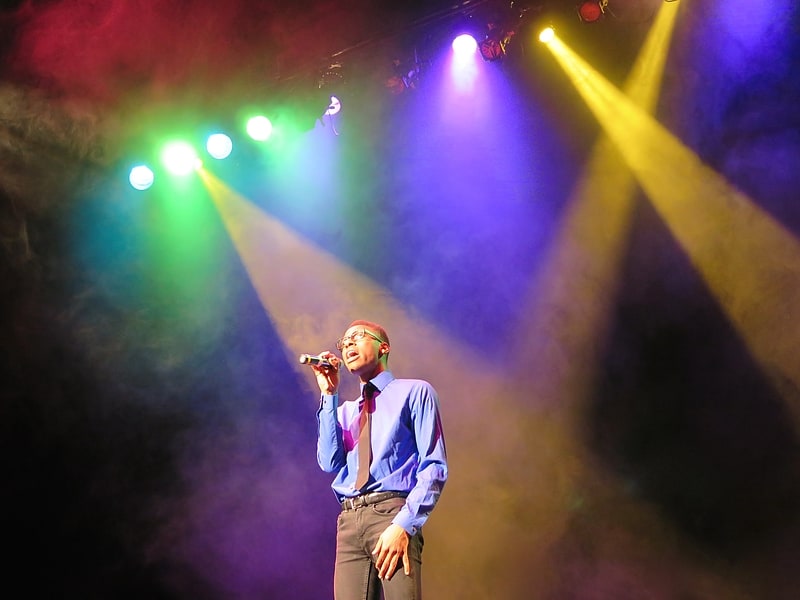
Theatre in Roanoke, Virginia. Mill Mountain Theatre is a professional equity theatre located in Roanoke, Virginia. Originally opening as Mill Mountain Playhouse as a “not-for-profit, non-Equity resident stock theatre”, the location burned down in 1976, leading to a re-opening and renaming at the Center in the Square in 1983. The theater is named after the nearby Mill Mountain, which is a popular theme for the naming of Roanoke landmarks and organizations, including the Mill Mountain Star, Mill Mountain Zoo, and Mill Mountain Coffee and Tea.
Mill Mountain Theatre also has a longstanding relationship with Hollins University and the Hollins Theatre Institute.[7]
Address: Roanoke, 1 Market St SE
Beth Israel Synagogue
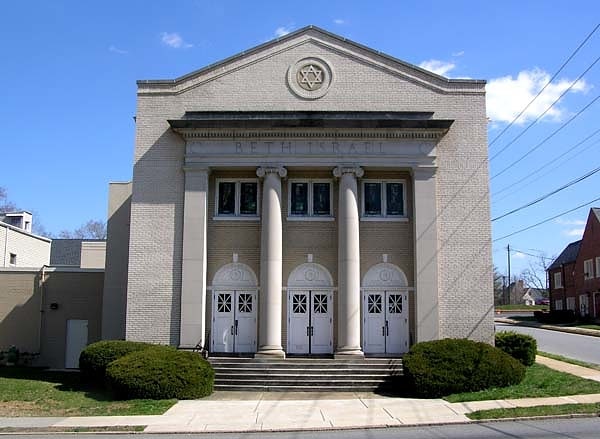
Synagogue in Roanoke, Virginia. Beth Israel Synagogue is a Conservative synagogue located at 920 Franklin Road in Roanoke, Virginia. The synagogue was founded in 1900, and as of 2009, it had a membership of approximately 160 families and individuals.
In 2007 the synagogue completed an expansion and renovation of its building, carefully planned so that the original facade, part of Roanoke's Old Southwest historic district, was unaltered. Fabian Werbin joined as rabbi in 2008.[8]
Mill Mountain Zoo
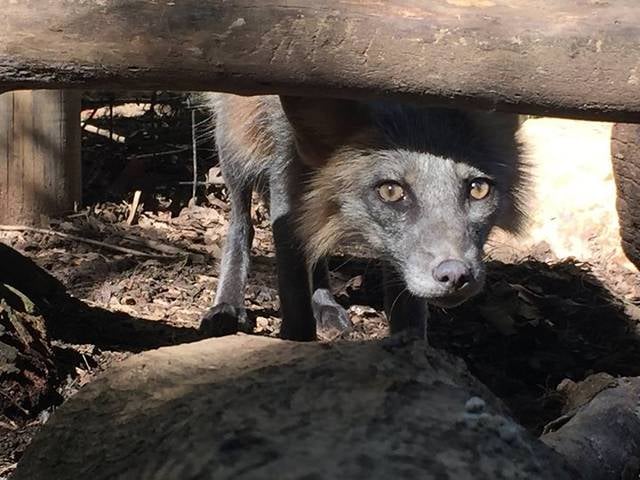
Compact animal park with a train ride. The Mill Mountain Zoo is a zoo located atop Mill Mountain in Roanoke, Virginia, United States. When it opened in 1952, the zoo was operated by the City of Roanoke. In 1976, the city turned its operation over to the Roanoke Jaycees. The Jaycees operated the zoo until 1988 when its operation was handed over to the non-profit Blue Ridge Zoological Society. The BRZS still serves as the operator and fund raiser for the zoo.[9]
St. John's Episcopal Church

Church in Roanoke, Virginia. St. John's Episcopal Church is a historic Episcopal church in Roanoke, Virginia, United States. It was built in 1891–1892, and is a Gothic style blue-gray limestone church designed by Charles M. Burns of Philadelphia. It has a nave-plan with side aisles, a corner bell tower, a sacristy wing, and a transverse chapel and narthex to the rear. The nave features a hammerbeam roof and wooden arcading and is illuminated by stained glass windows in the clerestory and side aisle walls including several by Louis Comfort Tiffany. Attached to the church by a stone addition built in 1958, is a Tudor Revival style Parish House built in 1923.
A church history was printed during the centennial of the building.
"The Church in Roanoke" is a historical sermon, preached by invitation on the occasion of the opening of Christ Church, Roanoke, (the old St. John's Church on Church Avenue) 14 December 1902, and repeated in St. John's Church, Jefferson Street and Elm Avenue, February 8, 1914.
It was listed on the National Register of Historic Places in 1991.[10]
Address: 1 Mountain Ave SW, 24016-5109 Roanoke
Mount Moriah Baptist Church and Cemetery

Cemetery. Mount Moriah Baptist Church and Cemetery is a historic African-American Baptist church and cemetery located at Roanoke, Virginia. It was built about 1908, and is a small, one-story, rectangular frame church sheathed in weatherboard. It consists of a main sanctuary, a front vestibule, and a rear chancel bay. The frame building sits on a raised foundation of uncoursed fieldstones. The associated burial ground contains over 100 interments from the 1870s through the present.
It was listed on the National Register of Historic Places in 1994.
Outside the entrance to the church is an historical marker that reads: "Mount Moriah Baptist Church. K-99. The members of Mount Moriah Baptist Church belong to one of the region's earliest African American congregations, originating in a Sunday school for slaves established in the mid-1800s by Dr. Charles L. Cocke, founder of Hollins College. The group gained permission in 1858 to build its first church. The present church, the congregation's third, was built about 1908. It was added to the National Register of Historic Places and the Virginia Landmarks Register in 1994. The nearby cemetery was expanded from a former slave burial ground."
"There are many unmarked graves at this location. The listing of names is complete as of 19 June 2007."
Recent upgrades in the church property included a new paved driveway from the City of Roanoke, and new kitchen and bathroom facilities, donated by local churches, individuals and organizations.[11]
Virginia Museum of Transportation
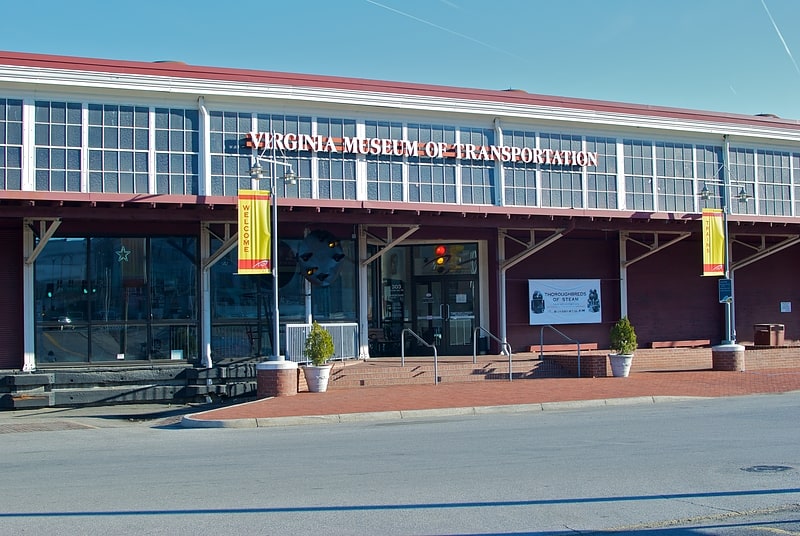
Museum in Roanoke, Virginia. The Virginia Museum of Transportation is a museum devoted to the topic of transportation located in Downtown Roanoke, Virginia, US.[12]
Wells Fargo Tower
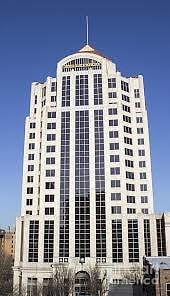
Building. The Wells Fargo Tower is a 21-story, 320-foot office building in Downtown Roanoke, Virginia. Completed in 1991, this stands as both the tallest building in Roanoke and the tallest building in Southwest Virginia.[13]
Address: 10 S Jefferson St, Roanoke
The Coffee Pot
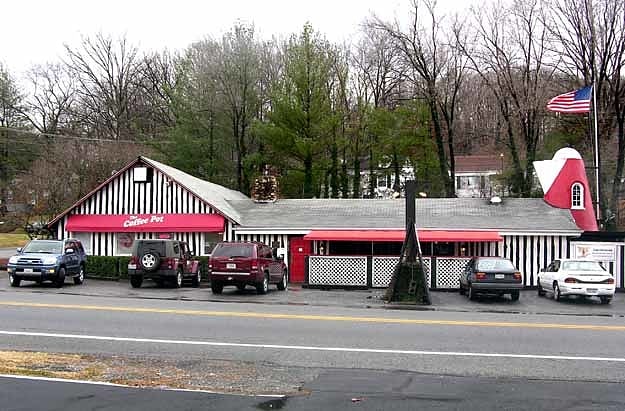
Roadhouse in Roanoke, Virginia. The Coffee Pot is a historic roadhouse listed on the National Register of Historic Places located in the Grandin Court neighborhood of the independent city of Roanoke, Virginia, U.S.A. Completed in 1936, The Coffee Pot is an example of novelty architecture as its distinctive feature is that of a stucco coffee pot structure that is situated on the roof of the building. Today, this remains as the only active roadhouse located within the Roanoke Valley.[14]
Address: 2902 Brambleton Ave, 24015-4402 Roanoke
Hollins University
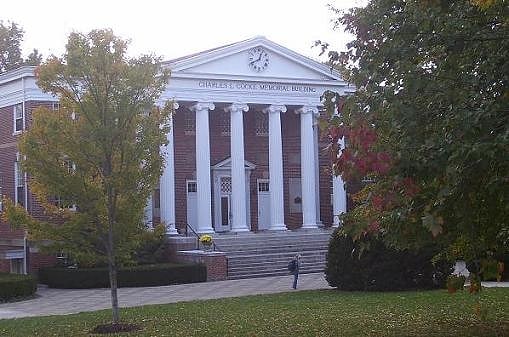
Private university in Roanoke, Virginia. Hollins University is a private university in Hollins, Virginia. Founded in 1842 as Valley Union Seminary in the historical settlement of Botetourt Springs, it is one of the oldest institutions of higher education for women in the United States.
Hollins enrolls about 800 undergraduate and graduate students. As Virginia's first chartered women's college, undergraduate programs are female-only. Men are admitted to the graduate-level programs.
Hollins is known for its undergraduate and graduate writing programs, which have produced Pulitzer Prize-winning authors Annie Dillard, former U.S. poet laureate Natasha Trethewey, and Henry S. Taylor. Other prominent alumnae include pioneering sportswriter Mary Garber, 2006 Man Booker Prize winner Kiran Desai, UC-Berkeley's first tenured female physicist (and a principal contributor to theories for detecting the Higgs boson) Mary K. Gaillard, Goodnight Moon author Margaret Wise Brown, author Lee Smith, photographer Sally Mann, and Ellen Malcolm, founder of EMILY's List.[15]
Address: 8009 Fishburn Drive, 24020 Roanoke
Belmont Methodist-Episcopal Church
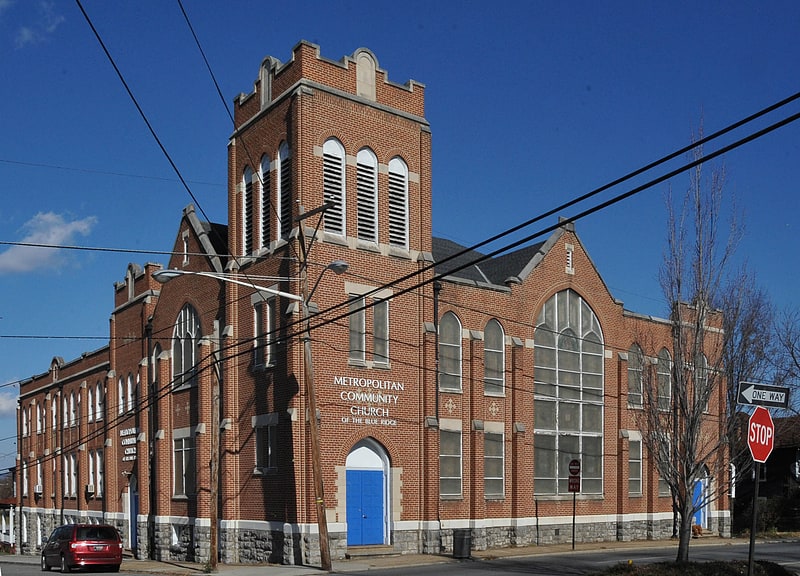
Belmont Methodist-Episcopal Church is a historic church building, located in the Belmont neighborhood of Roanoke, Virginia. The building currently belongs to the Metropolitan Community Church of the Blue Ridge, who acquired the building in 2003 and use it as their sanctuary.
It was built as a Methodist Episcopal church between 1917 and 1921, and is a three-story, brick, late Gothic Revival-style church. It features a tall bell tower, complex roof form, steeply-pitched gables and parapets, large pointed arch windows, crenellated corner towers, buttresses, cast-concrete quatrefoils, and other detailing. Capacity within sight and hearing of the pulpit is 1,000, as the original auditorium (seats 440) was enlarged with an adjoining parlor (75), an adult assembly room (260), and a gallery (225).
In a notice from 1917, H. L. Cain is named the architect of the church building, and the cost of the building was initially budgeted at $50,000.00.
It was added to the National Register of Historic Places in 2011.[16]
Address: 825 Stewart Ave SE, 24013 Roanoke
Center in the Square

Museum
Address: 1 Market Sq SE, 24011-1429 Roanoke
Memorial Bridge

Bridge in Roanoke, Virginia. The Memorial Bridge is a two-lane, 785-foot-long bridge spanning the Roanoke River along U.S. Route 11 in Roanoke, Virginia. The bridge serves as a connection between the southwestern areas of the city with central Roanoke. Built by contractor W.W. Boxley, the bridge consists of five 120 feet spans, with construction commencing in summer 1925. The bridge officially opened to traffic on May 6, 1926, at a final cost of $282,750.
Although officially open to traffic for over four months, its official dedication occurred on August 30 with U.S. Representative Clifton Woodrum in attendance. The delay in its dedication was attributed to delays involving the creation of the bronze, dedication plaques. It is officially dedicated to Roanoke's veterans of World War I.
The bridge features five plaques, with their contents determined by the Roanoke City Council. Four of them feature quotations from notable historic figures: Patrick Henry, Theodore Roosevelt, Stonewall Jackson and Thomas Jefferson; with the fifth containing the names of all the soldiers from Roanoke who died in World War I. Although dedicated to the veterans who fought in World War I, many did not attend the dedication ceremony due to its not being originally conceived as a monument to former servicemen. The bridge was officially rededicated on November 11, 1991, sixty-five years after its original dedication.
Due to its deteriorating state as a result of corrosion from salt used for deicing in the winter, in April 2002 a major restoration of the span commenced. Costing $1.17 million and completed by spring 2003, the restoration included the replacement of corroded elements, removal of the original Roanoke Street Railway Company streetcar tracks from the roadbed and a resurfacing of the pavement. Additionally, the restoration project incorporated traffic calming principles in reducing the number of vehicular travel lanes from four to two. In addition to the removal of a pair of lanes, both a median and two bike lanes were incorporated onto the bridge.[17]
Green Ridge Recreation Center
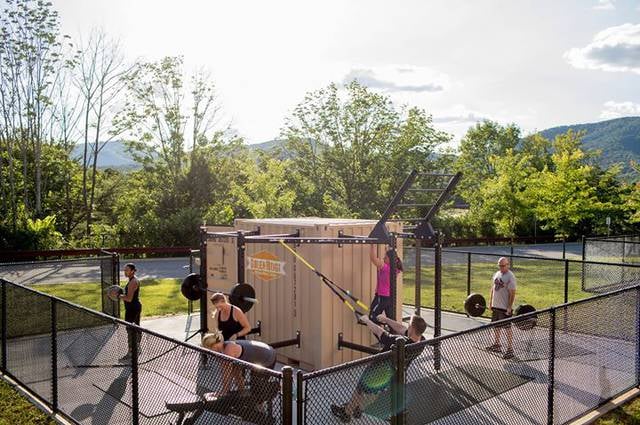
Water park, Park, Relax in park, Amusement park
Address: 7415 Wood Haven Rd, 24019-1901 Roanoke
Roanoke City Market Historic District
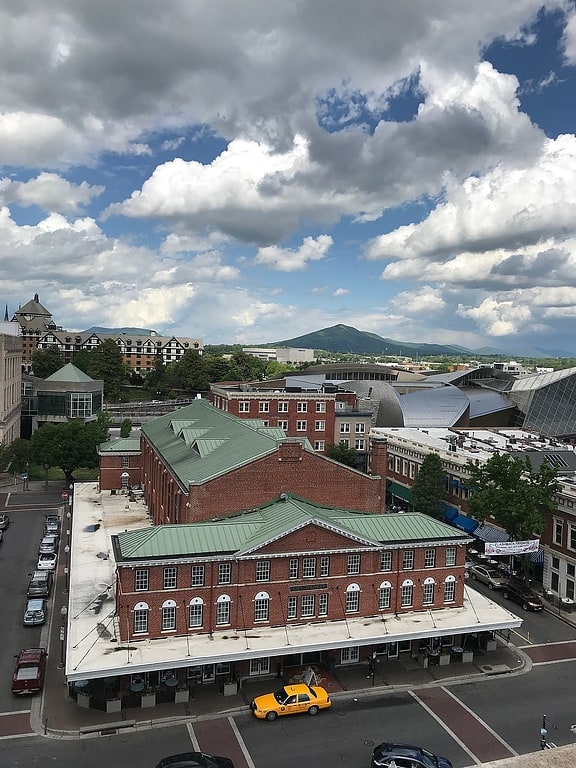
Roanoke City Market Historic District, also known as City Market District, is a national historic district located in the Downtown Roanoke area of Roanoke, Virginia.
A recent article about the city market said: "It’s been 135 years since Roanoke’s downtown farmers market, a city symbol, opened with 25 hucksters, otherwise known as vendors. In the market’s early days, including this view from 1936, there were more meat vendors compared with today’s seller mix.. Today’s market includes an approximately 60 percent farmer mix, alongside crafters and others vendors. Martin Farms of Fincastle is the oldest continuous market vendor. It has been on the market since 1904."
It was listed on the National Register of Historic Places in 1983, with an area "Roughly bounded by Williamson Rd. Norfolk Ave. S. Jefferson St. and Church Ave. The district area was increased to include 302 Campbell Ave. SE, and 9 Church Ave, SE, in 2002. The district encompasses 51 contributing buildings and 1 contributing object. The focal point of the area's grid-plan is the City Market Building (1922) set in the middle of the central Market Square. Other notable buildings include the Lampros Building (1909), the McGuire Building (1914), Goria Brothers Grocery Building (1924), and the E & M Market (1946). Located in the district is the separately listed Fire Station No. 1.[18]
Address: 32 Market Square Southeast, Roanoke